For Indian travellers seeking immersive, meaningful experiences, festivals in May are a golden window of opportunity as May’s cultural calendar overflows with deeply enriching festivals that offer a glimpse into the heart and soul of India.
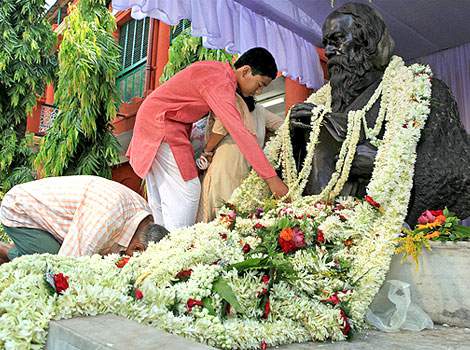
As summer takes hold, India doesn’t slow down—it shines brighter. The month of May breathes new life into towns and cities across the country, transforming everyday landscapes into vibrant stages of tradition, devotion, music, and dance.
From the misty hills of Nagaland to the fiery plains of Rajasthan, and from the serene ghats of the Ganges to the lush temple towns of Tamil Nadu, May’s festivals weave together a stunning portrait of India’s seasonal rhythms, age-old customs, and communal spirit.
Moatsu Festival, Nagaland (May 1–3)
Tucked away in the misty highlands of Nagaland, the Moatsu Festival offers a rare and intimate glimpse into the rhythm of tribal life. Celebrated from May 1 to 3 by the Ao Naga tribe, it marks the end of the demanding sowing season—a time to rest, reconnect, and rejoice in the hope of a bountiful harvest.

The heart of the celebration lies in Chuchuyimlang village in Mokokchung district, where the air is thick with tradition and the village transforms into a space of sacred stillness and togetherness. Gates are ceremonially closed to outsiders during the rituals, reinforcing the theme of community bonding.
The Moatsu Festival is a lived philosophy of gratitude, community, and harmony with the earth. In a fast-moving world, these three days in Nagaland remind you what it means to pause, honour the land, and celebrate life with those around you.
Rituals & Traditions
The spiritual centrepiece of the festival is the Sangpangtu, a blazing communal bonfire where villagers—adorned in ceremonial shawls, feathered headgear, and vibrant textiles—gather to eat, drink, and share oral histories. Plates overflow with smoked pork, sticky rice, and zu (a fermented rice beer brewed in bamboo).
While the feast continues, warrior songs echo through the hills, honouring ancestral bravery, and eulogies celebrate heroes of the past. Elders perform divination rituals, predicting the community’s fortune for the coming year—a mix of wisdom, intuition, and ancient belief.
Cultural Highlights
The festival is a sensory experience: the rustling of bamboo skirts in dance, the rhythmic stomp of traditional footwork, and the scent of woodsmoke and pork in the cool mountain air. There’s a deep reverence for nature, land, and legacy. Gift-giving adds to the warmth, as handmade items and food are exchanged as tokens of goodwill and hospitality.
In 2025, the celebration blends tradition with tourism through a “Mini Hornbill Festival”—a curated showcase of local art, crafts, and performances, with Chief Minister Neiphiu Rio as the chief guest. It’s a chance for visitors to experience Naga culture in an authentic, respectful setting.
Travel Notes
Best place to witness the festival: Chuchuyimlang village is where the most vibrant and traditional celebrations take place.
Getting there: By Air: Nearest airport is Jorhat Airport, about 110 km away; By Rail: Nearest major station is Mariani (Assam), followed by an 85 km scenic drive.
Stay Options: Homestays and guesthouses are available in Mokokchung and nearby villages—expect warmth, simplicity, and local charm.
Thrissur Pooram, Kerala (May 6)
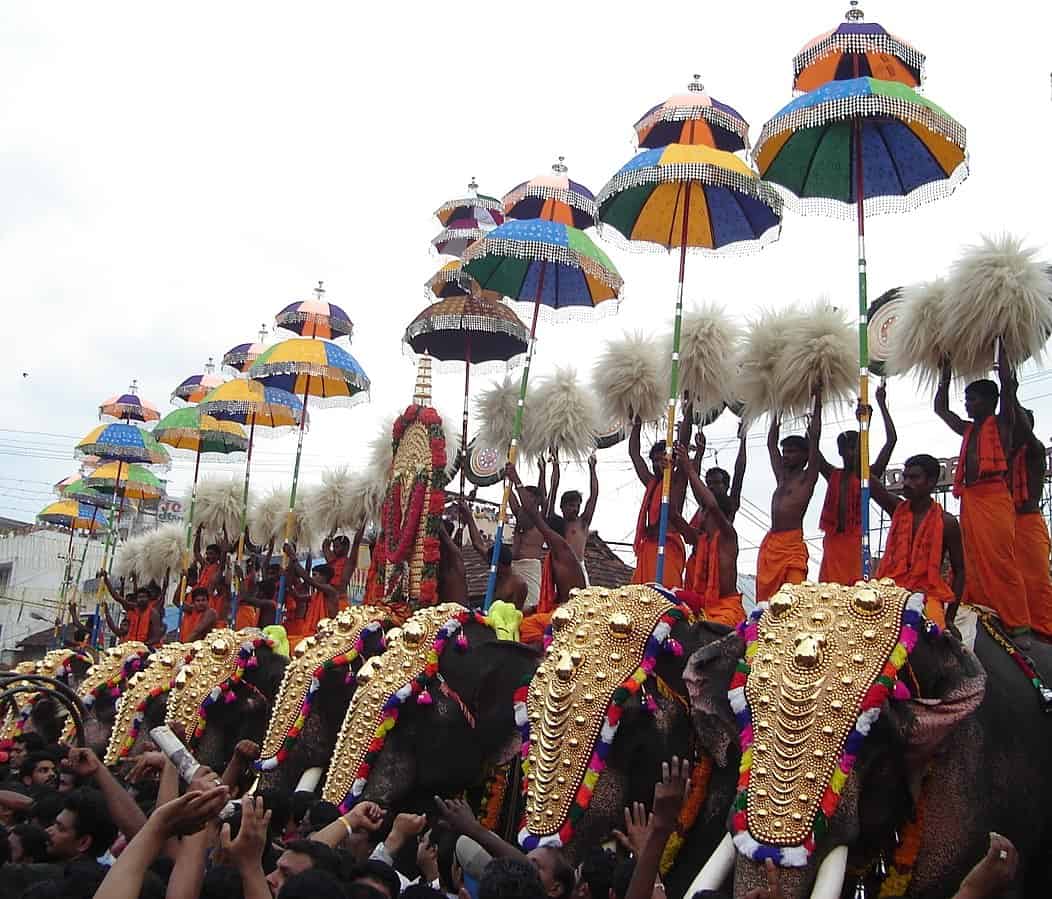
If Moatsu is intimate, Thrissur Pooram is India at its most awe-inspiring. Often called the “mother of all temple festivals,” this Kerala marvel is a grand-scale celebration that unfolds in a mesmerising symphony of elephants, percussion, colour, and communal energy. And in 2025, all eyes are on May 6—the confirmed date when this cultural epic takes centre stage.
Rituals & Spectacle
Held in the heart of Thrissur city at the Vadakkunnathan Temple, the festival begins its build-up on April 30 with the ceremonial Kodiyettam (flag hoisting), setting the spiritual tone for what’s to come. But the real crescendo is the dazzling procession of over 50 elephants, adorned in resplendent gold-plated headgear (nettipattam), with peacock-feather fans swaying rhythmically beside them.
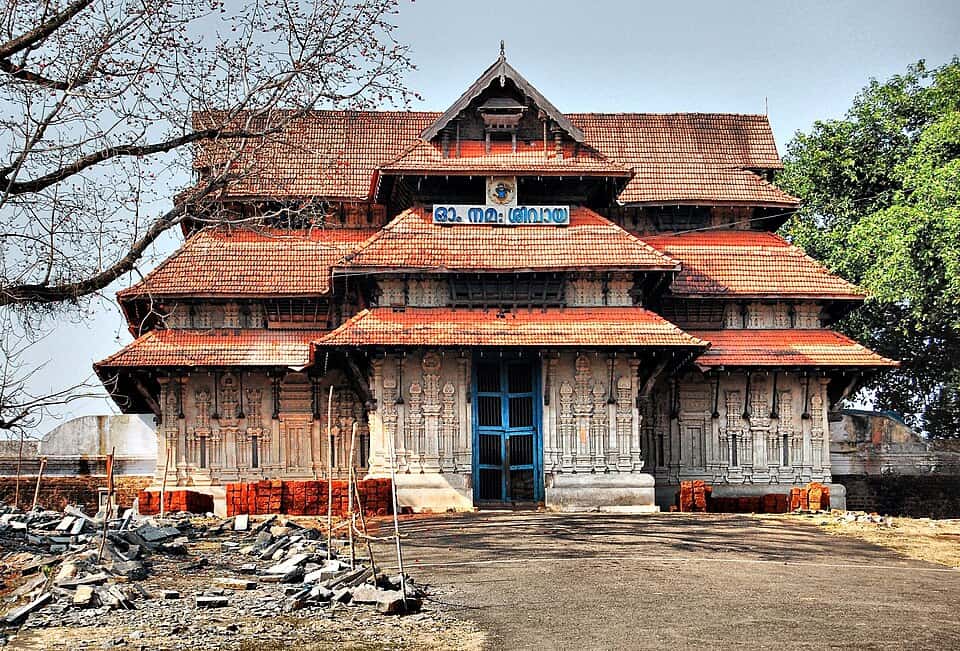
The iconic moment? Kudamattam—a choreographed exchange of vividly coloured silk umbrellas atop elephants, led by the Paramekkavu and Thiruvambadi temples. It’s not just ritual—it’s rhythm, rivalry, and revelation in one synchronised burst of visual delight.
Sound & Light
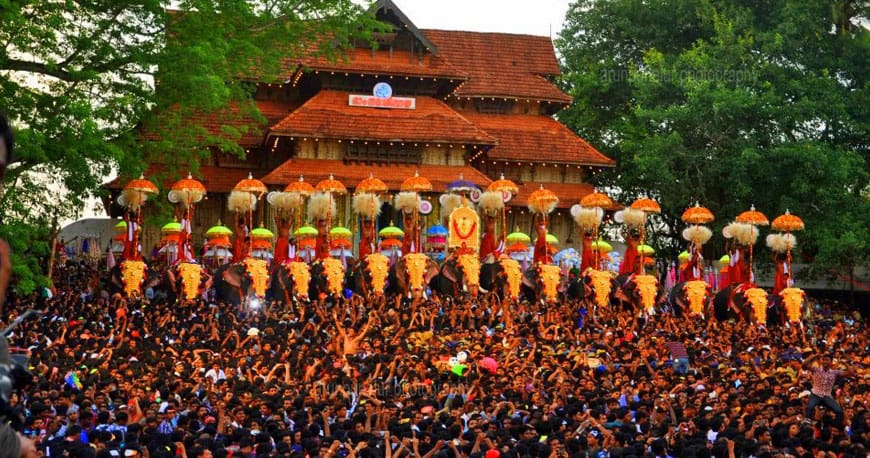
The atmosphere is electric. The ground shakes with the pulse of Panchavadyam and Chenda Melam, traditional Kerala percussion that pulls you into its hypnotic beat. At night, everything builds towards a fireworks spectacle that transforms the skies into a roaring sea of colour. This isn’t a short sparkler show—this is one of the longest and most intense pyrotechnic displays in India, with temple teams competing to outdo each other in scale and splendour.
Cultural Fusion
Beyond the sensory spectacle, the festival is a showcase of Kerala’s musical excellence, with more than 200 musicians participating in the legendary Elanjithara Melam, held inside the temple compound. The sound reverberates through the crowd, tying people together in a shared rhythm that’s centuries old.
Adding to the glory are deity processions from ten participating temples, making this not just a city event but a true community convergence, uniting different traditions under one joyous canopy.
A Festival with a Backstory
The story of Thrissur Pooram goes back to 1796, when Sakthan Thampuran, the then Maharaja of Cochin, transformed a local temple dispute into an opportunity for unity. He created a festival that would bring all communities together—a vision that today draws lakhs of spectators from across the country. The concluding ceremony, Punacharam Cholli Piriyal, is a symbolic goodbye between temples and their deities—an emotional close to a celebration that’s as spiritual as it is spectacular.
Travel Tip
If you’re planning to attend, mark your calendars for May 6 and aim to be in Thrissur by the end of April to catch the full build-up. Accommodations fill fast, and local guidance is recommended to navigate the packed venues and cultural etiquette. Be prepared for crowds—but also, for something unforgettable.
Buddha Purnima (May 12)
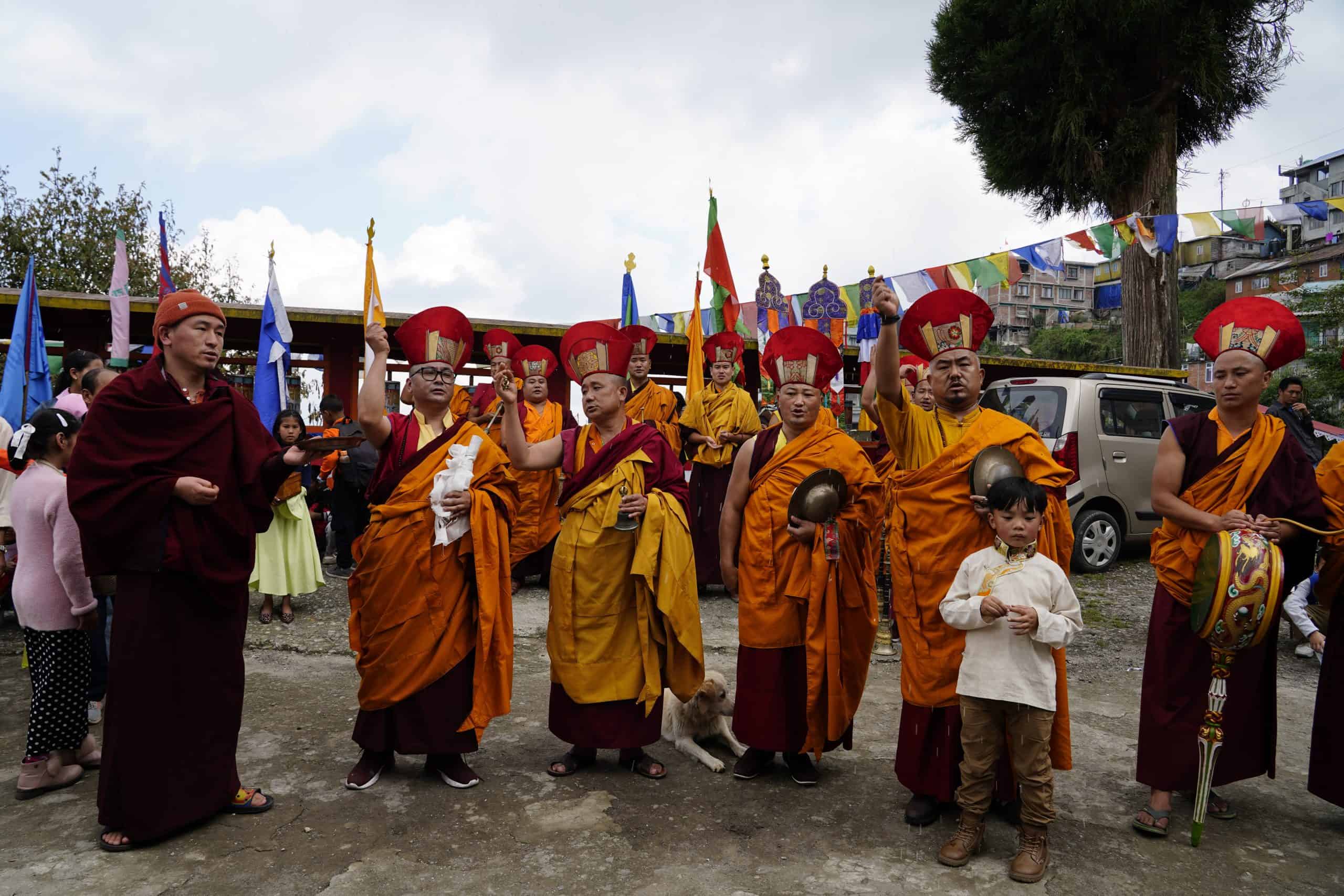
In stark contrast to the fanfare and sensory explosion of Pooram, Buddha Purnima is a day of serene introspection and spiritual clarity. Observed on the full moon of Vaishakha—this year on Monday, 12 May 2025—it marks the 2587th birth anniversary of Gautama Buddha and holds a unique reverence in the hearts of millions around the world.
Often referred to as Vesak, Vaishakha Purnima, or Buddha Jayanti, this “thrice-blessed day” commemorates three defining moments in the Buddha’s life: his birth in Lumbini, his enlightenment under the Bodhi tree in Bodh Gaya, and his Parinirvana in Kushinagar. All of these, according to Buddhist tradition, took place on the same auspicious lunar date, making it a day of immense spiritual significance.
Spiritual Significance & Legacy
Born as Siddhartha Gautama in the 6th century BCE, the Buddha’s journey from prince to philosopher began when he witnessed suffering for the first time. His quest for truth led him through years of hardship before attaining enlightenment beneath the Bodhi tree. His teachings—centered on detachment, compassion, and ethical living—remain profoundly relevant even today.

While the festival has deep religious roots, its message transcends borders. Buddha Purnima is now recognised globally. At the 1950 World Fellowship of Buddhists Conference, it was officially declared an international observance, celebrated by nations across Asia—known as Vesak in Sri Lanka and Indonesia, Saga Dawa in Tibet, Visakha Puja in Thailand, and Phat Dan in Vietnam.
Sacred Observance
The day begins in quiet reverence. Devotees wake before sunrise, bathe, and don simple white or saffron robes, symbolizing purity and detachment. Temples across India—especially in Bodh Gaya, Sarnath, and Kushinagar—become sanctuaries of meditation, chanting, and reflection.
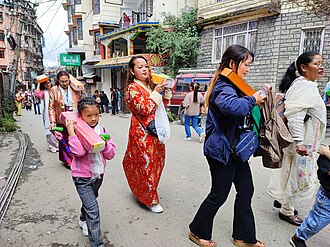
Worshippers make offerings of flowers, incense, and lamps, placing them before statues of the Buddha. The Bodhi tree, under which Siddhartha attained enlightenment, is adorned with colorful flags and garlands, and water is gently poured at its roots as a symbolic gesture of gratitude.
Chants from the Dhammapada and recitations of the Buddha’s first sermon—the Four Noble Truths and the Noble Eightfold Path—fill the air. Monks guide followers through periods of meditation and teaching, creating a contemplative atmosphere steeped in timeless wisdom.
In keeping with the Buddha’s message of compassion and non-violence, devotees engage in acts of goodwill—distributing food, clothing, and sweets to the poor. A particularly sacred offering is kheer, a sweet rice porridge believed to have been the Buddha’s first meal after renouncing asceticism.
Releasing caged birds and animals is another ritual observed on this day, symbolizing freedom, empathy, and the interconnectedness of all life. Many devotees also renew their ethical vows through the Panchsheel—a five-fold code of conduct that promotes truth, non-harm, and mindfulness in daily life.
Cuisine
The fare for the day is deliberately simple. Vegetarian meals are shared within families and communities—typically featuring seasonal fruits, boiled rice, and kheer. The food is not only nourishment but also a symbol of inner cleansing and devotion.
A Day of Peace, for the World
Whether you’re a devout follower or a curious traveller, Buddha Purnima offers an opportunity to step away from the chaos of modern life and reflect on deeper truths. It invites you to experience the power of stillness, the richness of compassion, and the strength that lies in simplicity.
Vaikasi Visakam, Tamil Nadu (May 24)
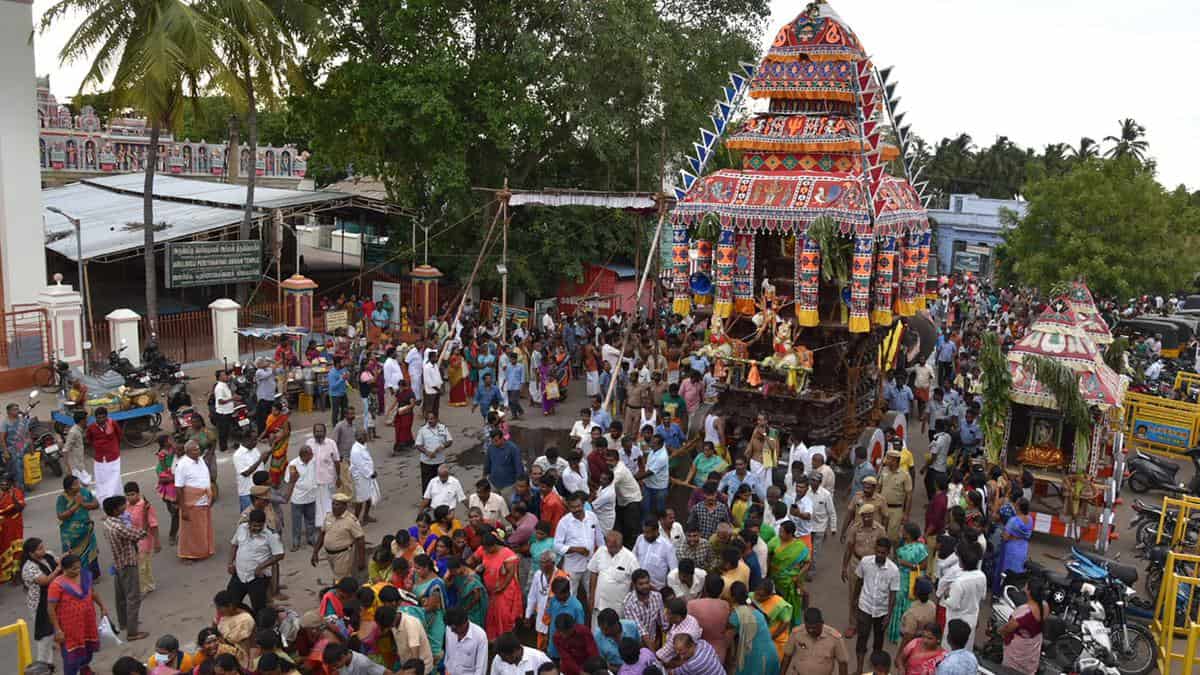
In Tamil Nadu, the month of May pulses with spiritual energy during Vaikasi Visakam, a festival that honours the birth of Lord Murugan, the valiant son of Lord Shiva and Goddess Parvati. Falling on May 24, 2025, it coincides with the Visakam star and the full moon in the Tamil month of Vaikasi—making it one of the most sacred days in the Murugan tradition.
Spiritual Fervor
Temples across the state come alive with the sound of devotional hymns, the aroma of sandalwood and camphor, and the vibrant hues of flower garlands. From early morning, poojas and abhishekams (ritualistic baths of the deity) are performed, especially the Pal Abhishekam, where Lord Murugan is bathed in milk, symbolizing purity and divine grace.
The festival celebrates the divine birth of Murugan, who, according to legend, emerged from six sparks of light from Shiva’s third eye. These sparks transformed into six babies, nurtured by celestial maidens (Krittikas), and later unified into one six-faced deity, embodying divine wisdom and omnipresence.
Rituals & Processions
The day unfolds in waves of religious devotion. In temples large and small, the Kukuta Homa (sacred fire ritual) is performed to invoke Murugan’s blessings. Grand processions carry beautifully adorned idols of the deity through the streets, accompanied by drums, nadaswaram, and chanting.
Many devotees undertake acts of penance, most notably the kavadi attam—a ritual dance performed while carrying ornately decorated wooden structures on their shoulders, often with piercings of the skin, tongue, or cheeks as offerings of sacrifice and surrender.
In Murugan’s six abodes (the Aru Padaiveedu temples at Palani, Tiruchendur, Thirupparankundram, Swamimalai, Thiruthani, and Pazhamudircholai), the celebrations take on a grand scale, with multi-day festivals known as Brahmotsavams and re-enactments of Murugan’s divine wedding with Valli, believed to bless couples with harmony and fertility.
Traditional Dress & Offerings
Devotees dress in their finest—men in white veshtis (dhotis), and women in vibrant silk sarees. Temples are draped in flowers, particularly red oleanders and Nagalinga blooms, sacred to Murugan. Offerings include milk, honey, fruits, and traditional sweets like sweet pongal, all of which are later shared as prasadam.
At home, families set up altars for Lord Murugan, light lamps, recite sacred hymns such as the Thirupughazh and Subramanya Bhujangam, and often observe fasts, taking only milk and fruit for the day.
Pilgrimage & Devotion
For many, the festival is an occasion for pilgrimage—walking barefoot for miles to reach Murugan temples, sometimes carrying Pal Kudam (pots of milk) on their heads. The devotion displayed is powerful and deeply moving, symbolizing surrender, resilience, and reverence. Acts of charity are widely encouraged—feeding the poor, donating to temples, and helping fellow pilgrims are considered vital expressions of faith.
Though deeply rooted in Tamil Nadu, Vaikasi Visakam is celebrated by Tamil communities around the world—in Sri Lanka, Malaysia, Singapore, and Mauritius—wherever the worship of Murugan has taken root. Astrologically, the alignment of the Visakam nakshatra with the full moon is considered highly auspicious for spiritual pursuits, making this day ideal for starting new vows or seeking divine blessings.
Worshipping Murugan on Vaikasi Visakam is believed to remove obstacles, grant courage, strengthen marriages, and bestow prosperity and wisdom. The atmosphere, charged with chants and faith, is as much about inner transformation as it is about ritual. For the devoted traveller or the culturally curious, it’s an unforgettable encounter with one of South India’s most powerful living traditions.
Mount Abu Summer Festival, Rajasthan (May 10–12)
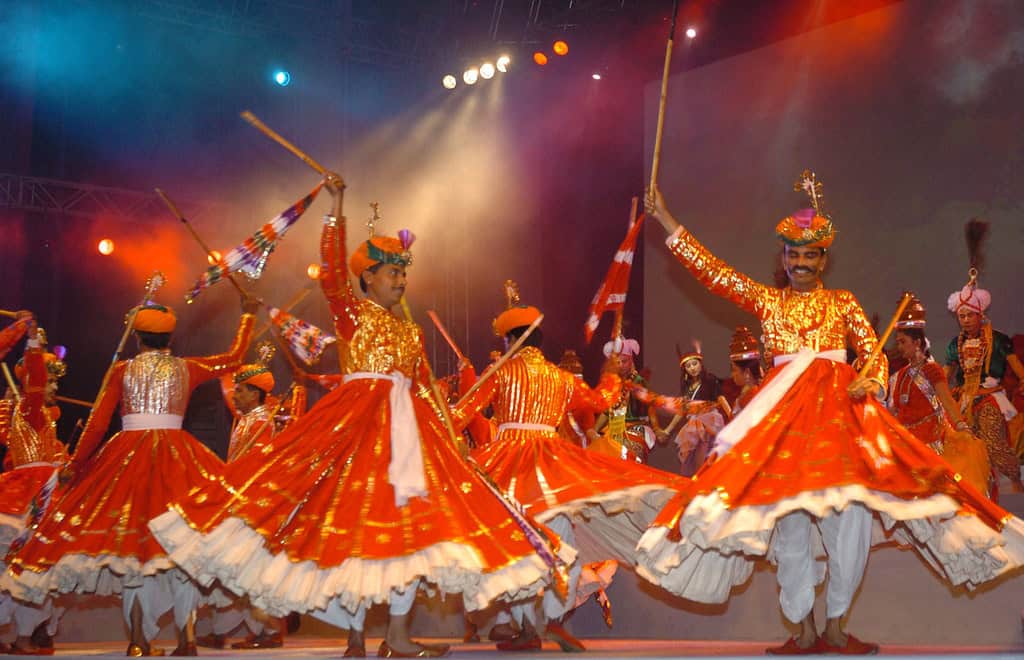
Rajasthan’s only hill station, Mount Abu, offers a welcome breath of fresh air from the searing plains—and in May, it becomes the stage for one of the state’s most colourful cultural showcases: the Mount Abu Summer Festival. Held from May 10 to 12, 2025, the festival is a vibrant blend of folk traditions, community spirit, and scenic celebration, perfectly timed with the auspicious full moon of Buddha Purnima.
A Festival Set in Myth and Music
Nestled in the Aravalli hills, Mount Abu is steeped in legend—believed to be visited by Hindu deities for sacred rituals. That divine resonance sets the tone for this three-day event, which not only celebrates local heritage but also pays tribute to Buddha Purnima, giving the festival a spiritual undercurrent.
One of the most engaging elements is the participation of the Garasia tribe, whose customs and colourful attire take centre stage in cultural performances and community rituals, offering visitors a rare window into Rajasthan’s tribal life.
Festival Highlights
The festivities open with a grand ceremonial procession from the RTDC Hotel Shikhar to Nakki Lake, where vibrant folk dancers, costumed performers, and musicians fill the air with rhythm and colour.
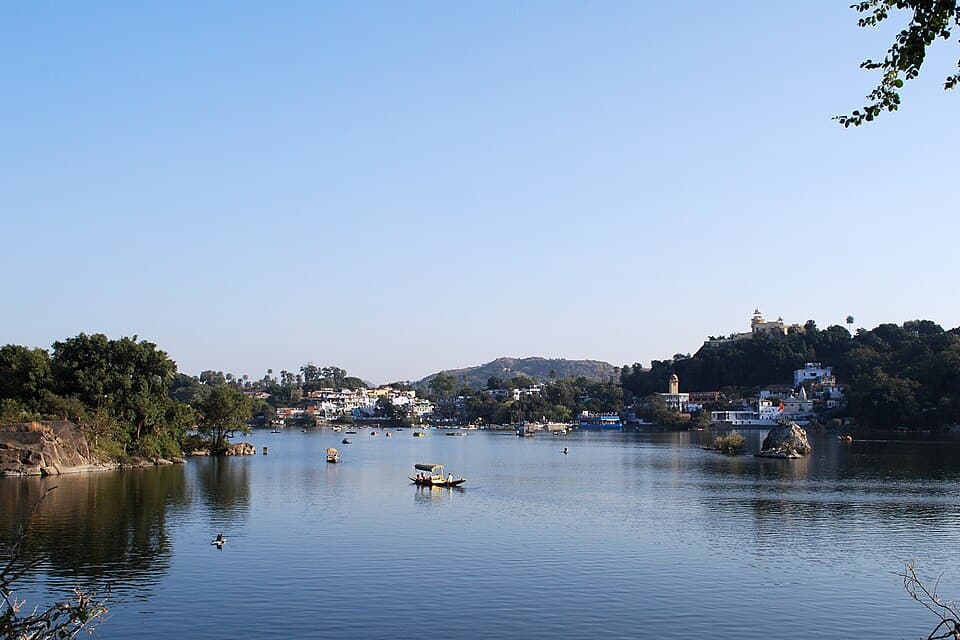
Once the procession reaches the lake, the excitement picks up pace with boat races, attracting enthusiastic spectators. Meanwhile, stages across the town host stunning folk performances—from the graceful swirls of Ghoomar to the high-energy beats of Gair, Daph, and Sufi-infused Sham-e-Qawwali evenings.
Adventure seekers can test their mettle with activities like rappelling and mountaineering, while fun-loving families enjoy quirky competitions such as skating races, matka races, tug-of-war, and even horse racing. A special CRPF band show adds a touch of pomp and ceremony to the day’s events.
Each night ends on a dazzling note, with the skies above Mount Abu set ablaze by a spectacular fireworks display, reflecting off the lake and hills for a truly magical finish.
Rajasthani Hospitality
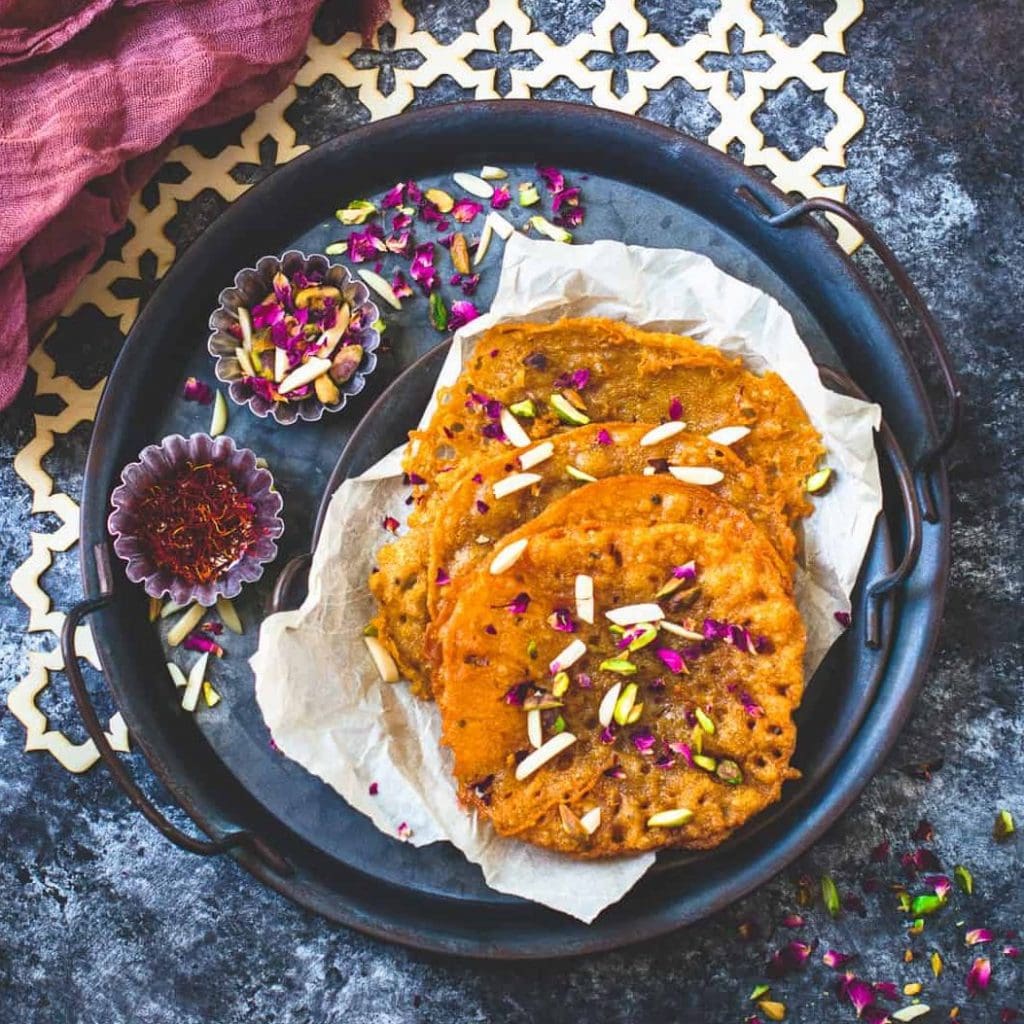
No celebration is complete without food, and the Summer Festival doesn’t disappoint. Food stalls around town offer an authentic taste of the region with hearty dishes like dal baati churma, gatte ki sabzi, spicy chaats, and the ever-refreshing chilled rabri. Local sweets, savoury snacks, and seasonal fruits keep festival-goers energised throughout the day.
A Festival of Spirit and Scenery
What makes this festival so special is the backdrop. Lush green hills, serene lakes, and Mount Abu’s cool, misty air create the perfect setting for open-air concerts, lakeside competitions, and long, laughter-filled strolls through craft bazaars. The community spirit is infectious, with locals and tourists alike participating in the celebration.
Getting There: By Air: Nearest airport is Udaipur, about 175–185 km away; By Rail: Abu Road Station, just 29 km from the town, is well-connected to major Indian cities; By Road: Excellent connectivity from Udaipur, Ahmedabad, Jodhpur, and Jaipur makes it a convenient drive.
Why It’s Worth the Trip
The Mount Abu Summer Festival is a rare event where music, nature, and people unite in celebration. It’s an escape into cooler climates, but also a deep dive into the heart of Rajasthani culture, filled with folk stories, festive energy, and shared experiences that stay with you long after the last firework fades.
Ganga Dussehra – Haridwar, Rishikesh & Varanasi (June 5)
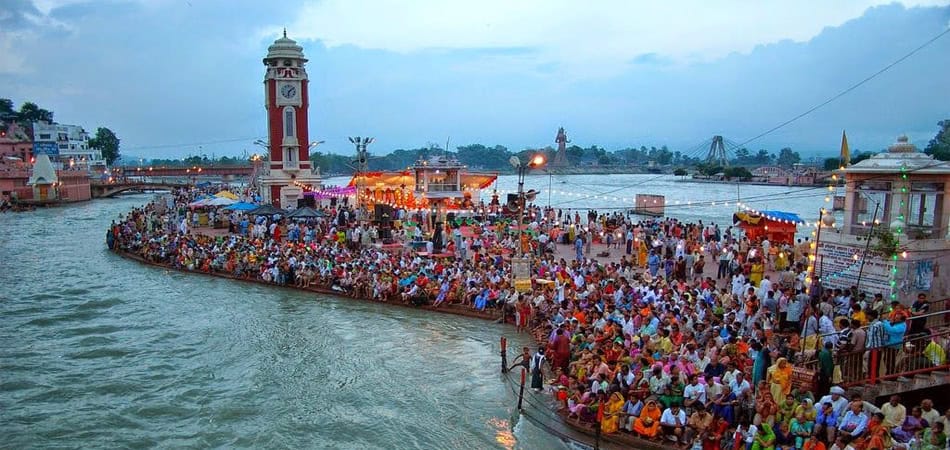
In the sacred towns that line the Ganges, Ganga Dussehra is more than a celebration—it’s a moment of divine alignment between heaven and earth. Observed this year on June 5, 2025, the festival marks the day the celestial Ganga River descended from the heavens, her waters believed to cleanse the sins of ten lifetimes and grant moksha, or spiritual liberation.
Rituals
The day begins at dawn, as thousands of devotees gather at the riverbanks for a holy dip (Shahi Snan), believing that immersion in the Ganga’s waters on this day carries immense spiritual merit. Throughout the day, people offer lit diyas, milk, and marigold flowers, setting them afloat on the river’s gentle current—a visual prayer for purification and peace.
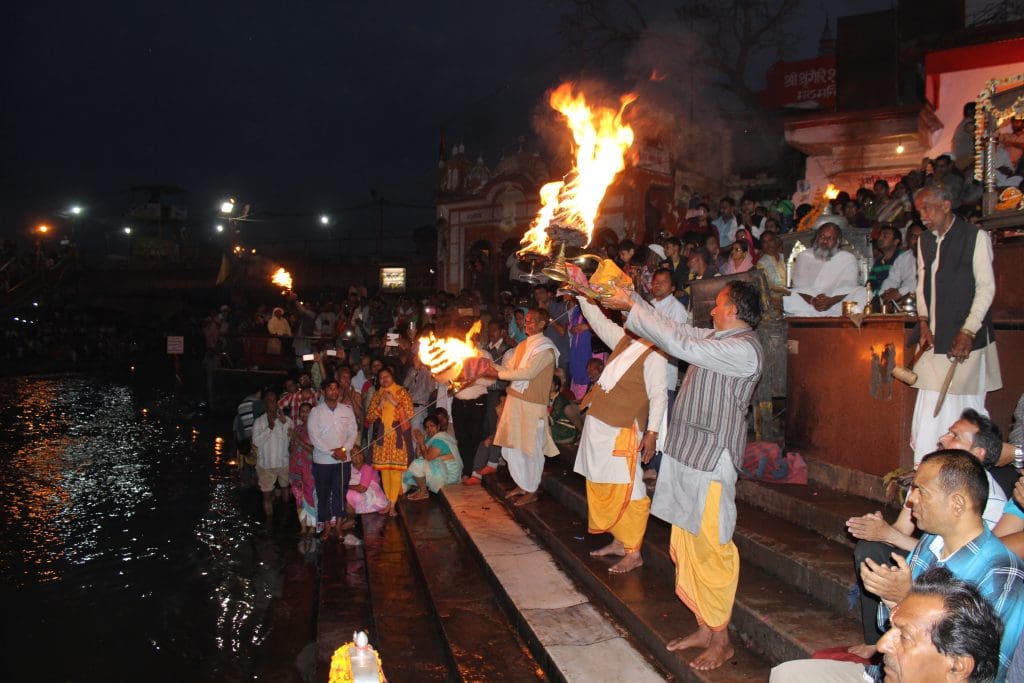
As the sun sets, the banks of Haridwar, Rishikesh, and Varanasi in Uttrakhand come alive with the glow of synchronized Ganga Aartis. Priests in saffron robes lift massive brass lamps, flames dancing in unison to the rhythm of ringing bells, blowing conch shells, and Vedic chants that echo across the ghats. The spiritual atmosphere is electric, yet profoundly calming—a reminder of the river’s sacred role as both goddess and lifeline.
Symbolism and Myth
According to Hindu legend, the festival commemorates King Bhagirath’s epic penance to bring the river Ganga from the heavens to liberate the souls of his ancestors. To prevent the river’s immense force from flooding the earth, Lord Shiva gently caught her in his matted locks, allowing her to descend calmly, nurturing and purifying as she flowed.
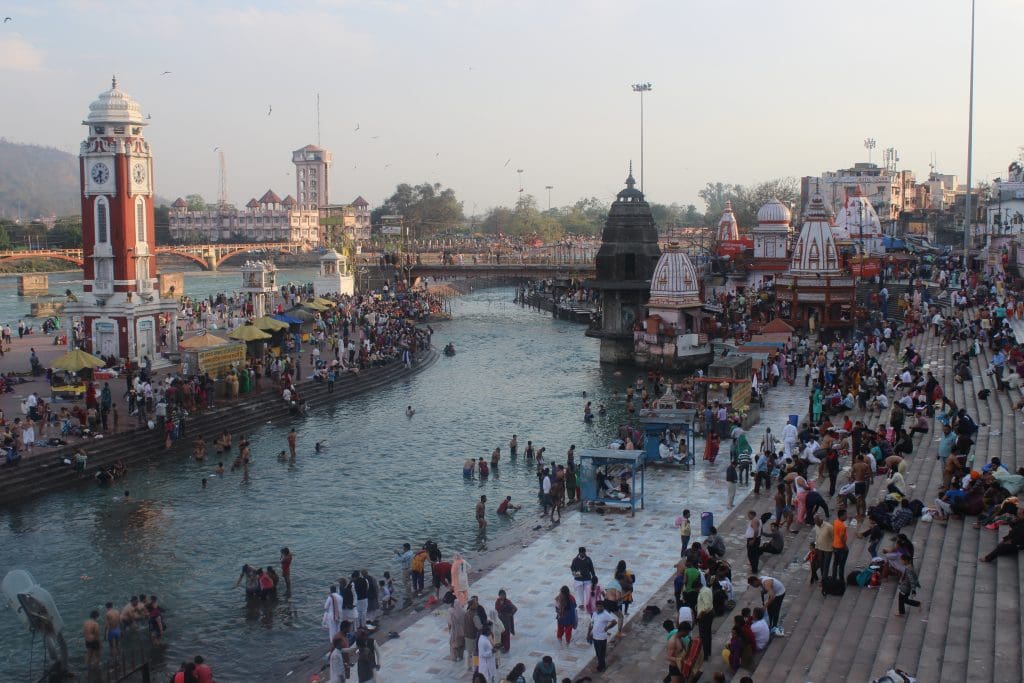
This ancient tale isn’t just mythology—it’s woven into every act of reverence during Ganga Dussehra. Every dip, every chant, every flickering diya becomes part of this cosmic story of redemption and rebirth.
Celebrations in the Holy Cities
- Haridwar: The famous Har Ki Pauri ghat draws thousands for the Maha Aarti, while palanquin processions and devotional singing fill the streets.
- Rishikesh: At Triveni Ghat, the aarti is accompanied by serene bhajans and floating lamps, while nearby yoga and meditation sessions invite spiritual seekers to reflect and rejuvenate.
- Varanasi: The spectacle reaches its grandest form at Dashashwamedh Ghat, where the aarti includes towering brass lamps, chanting priests, and boat processions that light up the river with thousands of glowing diyas.
Astrological Significance
The festival aligns with the Dashami tithi (10th lunar day) during Jyeshtha Shukla Paksha, under the Hasta nakshatra, a constellation symbolising health and healing. With the Sun in Taurus and Moon in Virgo, it’s believed to be an auspicious window for spiritual cleansing and new beginnings.
Ganga Dussehra is not just a religious ritual—it is a profound spiritual tradition, a symbolic act of returning to purity, and a deeply ecological expression of gratitude to a river that sustains life. It draws pilgrims, yogis, families, and spiritual seekers from across India and the world, uniting them in a timeless experience of devotion, community, and renewal.
Whether you stand at Har Ki Pauri, sit in stillness at Triveni Ghat, or sail past the glowing banks of Dashashwamedh, Ganga Dussehra invites you to pause—and feel the sacred current that flows through India’s heart and history.
Sital Sasthi – Sambalpur, Odisha (Late May–Early June)
In western Odisha, the town of Sambalpur transforms into a spectacular stage of divine theatre during Sital Sasthi, a week-long celebration of the celestial wedding of Lord Shiva and Goddess Parvati. Usually falling in late May or early June, the festival brings together faith, folklore, and festivity in one of the region’s most cherished cultural expressions.
Cultural Theatre in Full Bloom
Unlike traditional temple-bound rituals, Sital Sasthi plays out as a public wedding, with local families symbolically “adopting” the roles of Shiva and Parvati’s parents—hosting the engagement, the wedding, and even the return procession. Streets come alive with shehnai music, folk dances, and decorated chariots, as thousands of residents and visitors join in the nuptial spirit.
The celebrations kick off weeks in advance with Thala Utha, a fundraising tradition that builds community anticipation. From there, the rituals unfold like a dramatic arc: Patrapendi (engagement), Niuta (invitation), and the spectacular Barayatra, when Shiva’s idol journeys in procession to fetch his bride.
On the main day, the Vedic wedding rituals are performed with great devotion. Devotees stand in for Parvati’s parents, performing Kanyadaan, while the gods are married under ceremonial canopies to chants and rituals from sacred texts. The wedding culminates in the Saptapadi, the symbolic seven steps of union.
Cuisine & Dress
The festival is as much about community bonding as it is about devotion. Local women in vibrant Sambalpuri sarees, and men in traditional dhotis, lead the procession bearing flower-decked palanquins. Homes and streets are decorated with rangoli, and the aroma of festive dishes—dalma, kheer, pakhala bhata, and crispy bara—drifts through the air.
The Grand Procession
The newlywed deities tour the town on grand chariots in the Sital Sasthi Yatra, cheered on by a tide of over 7,000 performers. Folk dances like Gotipua, Sambalpuri, and martial performances flood the streets, while thematic floats (tableaux) depict episodes from Shiva-Parvati lore, such as the cosmic Tandava or the tale of Girija Kalyanam.
This procession is not just a visual feast—it’s a living, breathing carnival that blurs the lines between performer and spectator. Families open their doors, music pours from every street corner, and laughter and devotion intermingle in the summer air.
Unique Aspects & Cultural Legacy
Beyond the religious devotion, what makes Sital Sasthi extraordinary is its human role-playing. Real families act as the divine couple’s parents, making the festival deeply participatory and rooted in local life. It’s also seen as a metaphor for seasonal transition—Shiva as the fierce summer, and Parvati as the cooling monsoon, their union symbolizing relief and renewal.
Recognized as Odisha’s second-largest festival after the Rath Yatra, Sital Sasthi is also a beacon of cultural tourism, attracting thousands from across India and abroad.
How to Reach Sambalpur: By Air: Nearest airport is Jharsuguda (60 km), or Raipur (250 km) ; By Rail: Sambalpur Junction is a major railhead with good connectivity; By Road: Well-connected via highways to Bhubaneswar (approx. 320 km) and Kolkata (approx. 560 km).
Looking Ahead: 2025 Edition
While the exact dates for Sital Sasthi 2025 are yet to be officially announced, celebrations are likely in late May to early June, following the sixth day of Jyeshtha Shukla Paksha. The main wedding and grand procession typically take place on Days 4 to 6 of the festival week.
Why You Should Go
Sital Sasthi is more than a festival—it’s a community-led epic that blends mythology with performance, devotion with joy. For any traveller seeking to experience authentic Odisha, it offers a powerful, participatory, and unforgettable immersion in India’s living traditions.
Rabindra Jayanti – Santiniketan, West Bengal (May 9, 2025)
Not all festivals are religious—some are a tribute to timeless artistry. Rabindra Jayanti in West Bengal celebrates the birth anniversary of Rabindranath Tagore, the literary giant who reshaped Bengali and global thought through poetry, music, education, and humanist ideals.
Artistic Expression
At Santiniketan, the town Tagore envisioned and brought to life in 1901, the day unfolds as a poetic journey from dawn to dusk. Students and artists from Visva-Bharati University fill the open-air venues with performances of Rabindra Sangeet, Tagore’s signature compositions, rich with emotion and lyricism. The stage comes alive with dance-dramas such as Chitrangada, Shyama, and Chandalika, while voices rise in collective recitations of his poetry, from Gitanjali to Kabuliwala and The Postmaster. The atmosphere is contemplative, gentle, and deeply connected to the philosophy of harmony between nature, art, and the spirit.
Attire & Ambience
The celebration is as visual as it is intellectual. Santiniketan blooms with people dressed in simple white cotton sarees and dhotis, trimmed with red—a colour scheme symbolic of purity and grace. The khesh fabric worn by many reflects a conscious return to handwoven simplicity, a nod to Tagore’s belief in aesthetic rootedness. Garlands of seasonal flowers adorn not just the performers but the entire town. Upasana Griha, the glass-walled prayer hall, becomes a focal point for early morning prayers, choral singing, and floral offerings. The red soil paths, shaded groves, and mango orchards of Santiniketan set the perfect stage for this cultural ode.
Tributes and Reflection
Beyond the performances, the celebrations also honour Tagore’s enduring thoughts on education and global unity. Essay contests are organised, where young minds debate the relevance of his ideals in today’s fractured world. At Kala Bhavana, the art college he founded, visitors can view original sketches and paintings by Tagore himself—raw, abstract, and deeply personal. Baul singers bring in a different note, with their soulful renditions echoing the syncretic philosophy that shaped Tagore’s worldview. Their songs, rooted in mysticism, resonate with the poet’s vision of unity beyond religion, caste, or creed.
Cultural Pilgrimage
Though Tagore was born on May 7, 1861, the celebrations are aligned with the 25th day of Boishakh on the Bengali calendar, which falls on May 9 in 2025. Throughout the week leading up to it, Santiniketan becomes a cultural pilgrimage site. From intimate performances under the trees of Amrakunja to the vibrant, inclusive atmosphere of open classrooms and shaded courtyards, every corner of the university echoes with the spirit of Tagore. Floral tributes are placed at Jorasanko Thakurbari in Kolkata and at his memorial site in Santiniketan.
Planning the Visit
With daytime temperatures ranging between 25 and 35°C, light cottons and sun protection are advised. Bolpur-Santiniketan Railway Station offers convenient rail access, while Kolkata’s international airport lies about 160 km away. Homestays and university guesthouses provide an immersive local experience, but booking in advance is essential due to the high influx of visitors.
Why Santiniketan Matters
To celebrate Rabindra Jayanti here is to experience Tagore’s dreams in motion. The surroundings themselves are a reflection of his philosophy—education under the sky, art without walls, and nature as a co-creator. The celebration is not just a commemoration of birth; it’s a reaffirmation of the poet’s vision of the world as one nest, where ideas, art, and identities merge freely.
In Santiniketan, Rabindra Jayanti is a living memory, a gentle revolution in thought, and a quiet celebration of everything that makes life beautiful and meaningful.
Shimla Summer Festival – Himachal Pradesh (June 1–5, 2025)
As spring fades into summer, the cool hill breeze of Shimla carries with it the sounds of drums, laughter, and celebration. Held on The Ridge, the city’s iconic promenade, the Shimla Summer Festival is a five-day cultural extravaganza that kicks off the month of June (official 2025 dates: June 1 to 5). Rooted in a tradition that dates back to 1960, the festival honours the region’s summer harvest, Himachali heritage, and artistic spirit, drawing thousands of visitors each year.
Family Fun & Festive Vibes
There’s something for everyone here. The festival begins with a grand inauguration featuring folk dance performances and the opening of local food stalls. Over the following days, The Ridge becomes a playground for children’s competitions, dog shows, and skating races, while the air resonates with the highland beats of Nati and Kulluvi—traditional dances performed by hundreds in a joyful swirl.
Visitors are also treated to live music concerts by top Indian artists—past editions have seen legends like Lata Mangeshkar and Gurdas Mann take the stage. Comedy nights, qawwali evenings, and a flower show featuring rare Himalayan orchids and rhododendrons add to the visual and musical delight.
Competitions & Cultural Showcase
The festival isn’t just about watching—it’s about participating. Local and visiting guests can sign up for photography contests, fashion shows, marathons, and the popular Miss Shimla pageant. Themed activities for 2025 also include a social awareness campaign titled “Drive Against Drugs,” blending festivity with purpose.
At every corner, craft exhibitions showcase the work of regional artisans—woollen shawls, pottery, woodcraft, and Pahadi art are on full display. The event offers an important platform for weavers, farmers, and folk performers, helping sustain Himachal’s traditional livelihoods.
Mountain Flavours
The culinary scene is just as lively. Siddu, chha gosht, chana madra, and Babru tempt the taste buds, served piping hot from local vendors. Wash it down with a glass of rhododendron juice or enjoy sweet mittha while gazing out over the valley from The Ridge.
Why Visit?
The Shimla Summer Festival is a blend of tradition and modern flair, all set against the magnificent backdrop of the Himalayas. It offers families a festive retreat, culture lovers a feast for the senses, and travellers a cool-weather escape from the summer heat of the plains.
With over 50,000 attendees annually, the festival revives Shimla’s colonial-era charm as the “Queen of Hill Stations,” while showcasing the energy and creativity of modern Himachal.
From flower shows to folk songs, mountain food to marathon fun, the Shimla Summer Festival is where cool weather meets warm hospitality—making it one of India’s most joyful hill station experiences.
Chithirai Festival – Madurai, Tamil Nadu (April 29 – May 12, 2025)
Though it begins in April, the Chithirai Festival extends well into May, culminating in one of the most majestic events in Tamil Nadu.
The Divine Wedding
Celebrated in the historic city of Madurai, the Chithirai Festival marks the divine marriage of Goddess Meenakshi and Lord Sundareswarar (Shiva). Central to this sacred celebration is the grand arrival of Lord Kallazhagar (an incarnation of Vishnu), who journeys from Alagarkoil to attend his sister Meenakshi’s wedding. Although he arrives late and does not enter the temple, his presence at the Vaigai River is met with overwhelming devotion. Crowds gather along the riverbanks to witness this mythological moment come alive, as Alagar bestows his blessings from the water, symbolising unity between Shaivism and Vaishnavism.
According to legend, Meenakshi was born to the Pandya king as a warrior princess and earned the divine right to marry Shiva after proving her strength across the three worlds. Their union, Meenakshi Thirukalyanam, is a symbolic celebration of cosmic harmony—the coming together of Shakti and Shiva. Meanwhile, Alagar’s river entry reflects the humility and grace of a brother who, despite being late, offers heartfelt blessings. This dual narrative not only enriches the festival’s mythology but also fosters a deep sense of spiritual unity.
Key Chithirai Festival Moments of 2025
The festival opens on April 29 with the ceremonial flag hoisting at Meenakshi Temple, followed by a series of processions where deities are carried through Madurai’s ancient streets on elaborate mounts. On May 3, Goddess Meenakshi is crowned Queen of Madurai in the Pattabhishekam ceremony. The divine wedding takes place on May 8 inside the temple, followed by the chariot festival on May 9, where towering wooden chariots carrying the divine couple are pulled through the streets by thousands of devotees. Lord Alagar begins his journey from Alagarkoil on May 10, enters Madurai’s outskirts on May 11, and finally reaches the Vaigai River on May 12, where the festival reaches its spiritual crescendo.
Temples glow with the fragrance of jasmine and the brightness of marigold garlands. Elephants, adorned with painted motifs and golden ornaments, parade alongside classical musicians whose melodies echo through the city. Vahanas—ornate, mythologically inspired vehicles—carry the deities, each one more dramatic than the last, from the mountain-shaped Kailasa palanquin to the divine cow Kamadhenu. The streets of Madurai transform into a vivid tapestry of devotion, drama, and dance.
Rituals and Revelry
Every day of the festival features processions that blend piety with theatrical pageantry. Traditional folk performances such as Karakattam and Oyilattam breathe life into the nights, while Carnatic music concerts provide a serene counterpoint to the high-energy celebrations. Temple kitchens serve free meals—annadanam—to thousands of pilgrims, a gesture of unconditional hospitality. Alongside the spiritual fervour, local fairs and craft exhibitions buzz with activity, showcasing Tamil Nadu’s rich artisanal legacy and cuisine.
Practical Tips for Travellers:
The best vantage points are the Meenakshi Temple for the wedding and chariot festival, and the Vaigai Riverbanks on May 12 for Alagar’s divine appearance. It is advisable to book accommodations at places like Heritage Madurai or GRT Regency well in advance, as the festival draws lakhs of visitors. Madurai Airport is just 12 km from the temple, and the city is also well-connected by rail. Visitors are encouraged to wear traditional Indian attire—sarees and dhotis—when attending temple events, as a mark of respect.
India in May is a Cultural Immersion
India in May is not merely a geographical experience—it is a cultural immersion. These festivals go beyond religion and celebration; they are expressions of identity, heritage, resilience, and joy. For Indian travelers, they present a rare chance to participate, not just observe—to become part of the collective heartbeat of a community, to dance, chant, cook, and pray together.
So whether you’re drawn by the thundering drums of Thrissur, the quiet reflections of Buddha Purnima, or the folk rhythms of Shimla, let May be your gateway into the diverse and timeless traditions that make India truly unforgettable.
Read More: Latest



